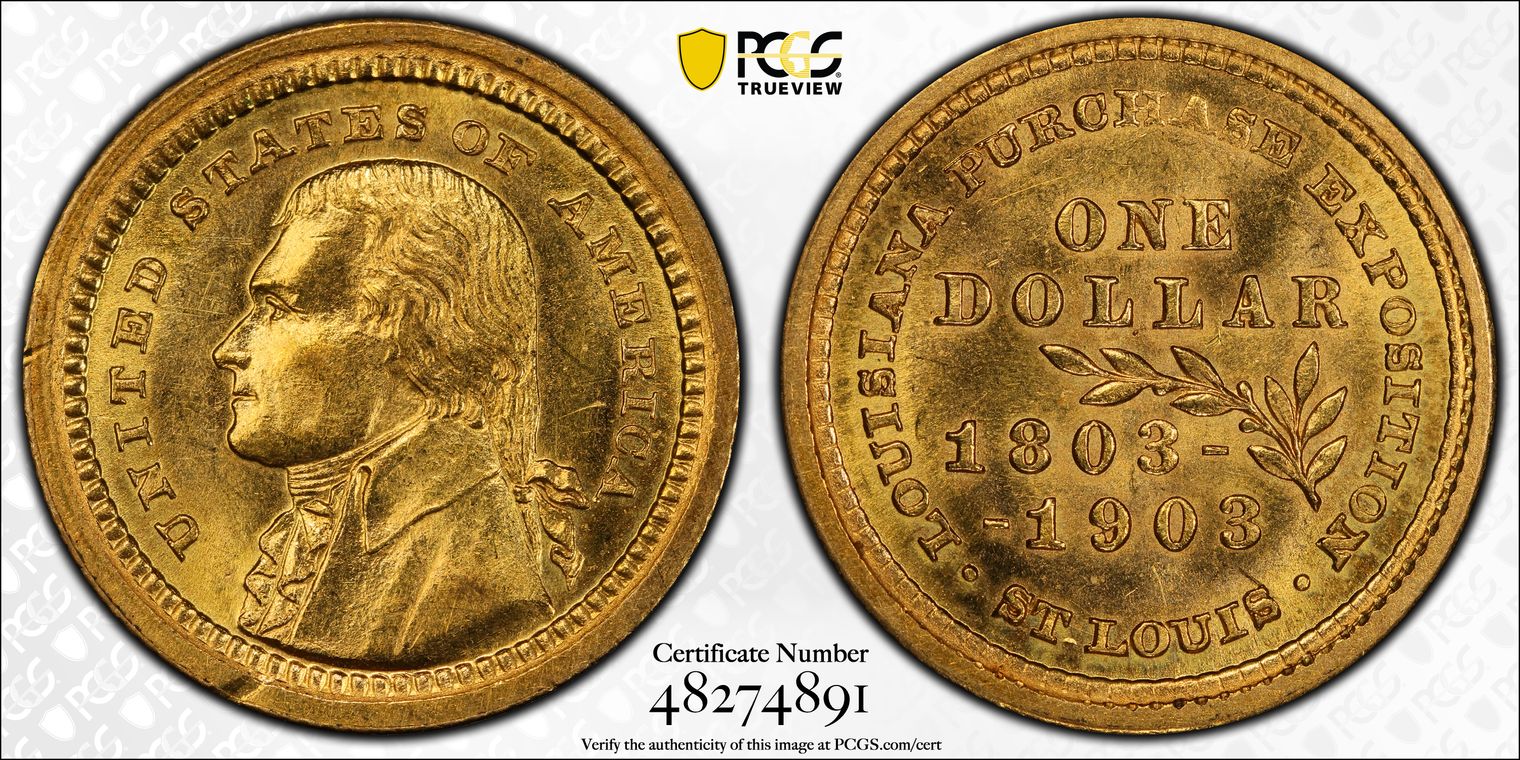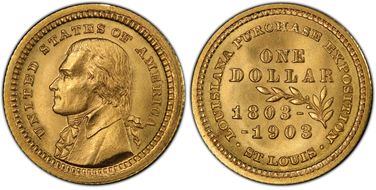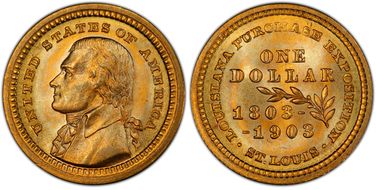1903 G$1 LA Purchase, Jefferson MS63 认证号48274891, PCGS号7443
专家评论
Jaime Hernandez
In the early 1800's Thomas Jefferson sent U.S. representatives to make a deal with Napoleon Bonaparte for the purchase of a large section of the Louisiana Territory. On April 30, 1803, the United States finally signed the Louisiana Purchase Treaty. This purchase immediately doubled the size of the United States at that time.
100 years later, Congress appropriated $5 million to fund the construction of a world fair, including the building’s and exhibits. Additionally Congress also approved the production of 250,000 gold dollars to commemorate this memorable event. At the time, Farran Zerbe famous coin collector and dealer had close connections with the Mint and he suggested the use of two different designs on the coins in an attempt to popularize the coins.
Therefore, the Mint struck two different 1903 Louisiana Purchase Gold Dollars. One had a portrait of Thomas Jefferson on the obverse, while the second on had a portrait of William McKinley. Both coin designs carried the same reverse design.
Obviously, the first coin had Thomas Jefferson’s design since he is the one who made the Louisiana Purchase possible. McKinley on the other hand, appeared on the second coin design because he was assassinated just six months after he signed the appropriations bill for the Exposition.
At the Exposition Fairground, each 1903 Louisiana Purchase Gold Dollar was being sold by Zerbe at a price of $3 each. Unfortunately, the entire mintage of the coins failed to sell out. Ten years after the Exposition, Zerbe continued to sell them at a lower price than the original $3 issue price. By 1914, at least 215,000 coins still remained unsold and were later melted by the U.S. Mint.
稀有性和存量估计 了解更多
| 所有评级 | 10000 |
| 60或以上 | 9000 |
| 65或以上 | 3000 |
| 所有评级 | R-3.0 |
| 60或以上 | R-3.2 |
| 65或以上 | R-4.4 |
| 所有评级 | 11 / 13 |
| 60或以上 | 11 / 13 |
| 65或以上 | 12 / 13 |
| 所有评级 | 11 / 13 |
| 60或以上 | 11 / 13 |
| 65或以上 | 12 / 13 |
























